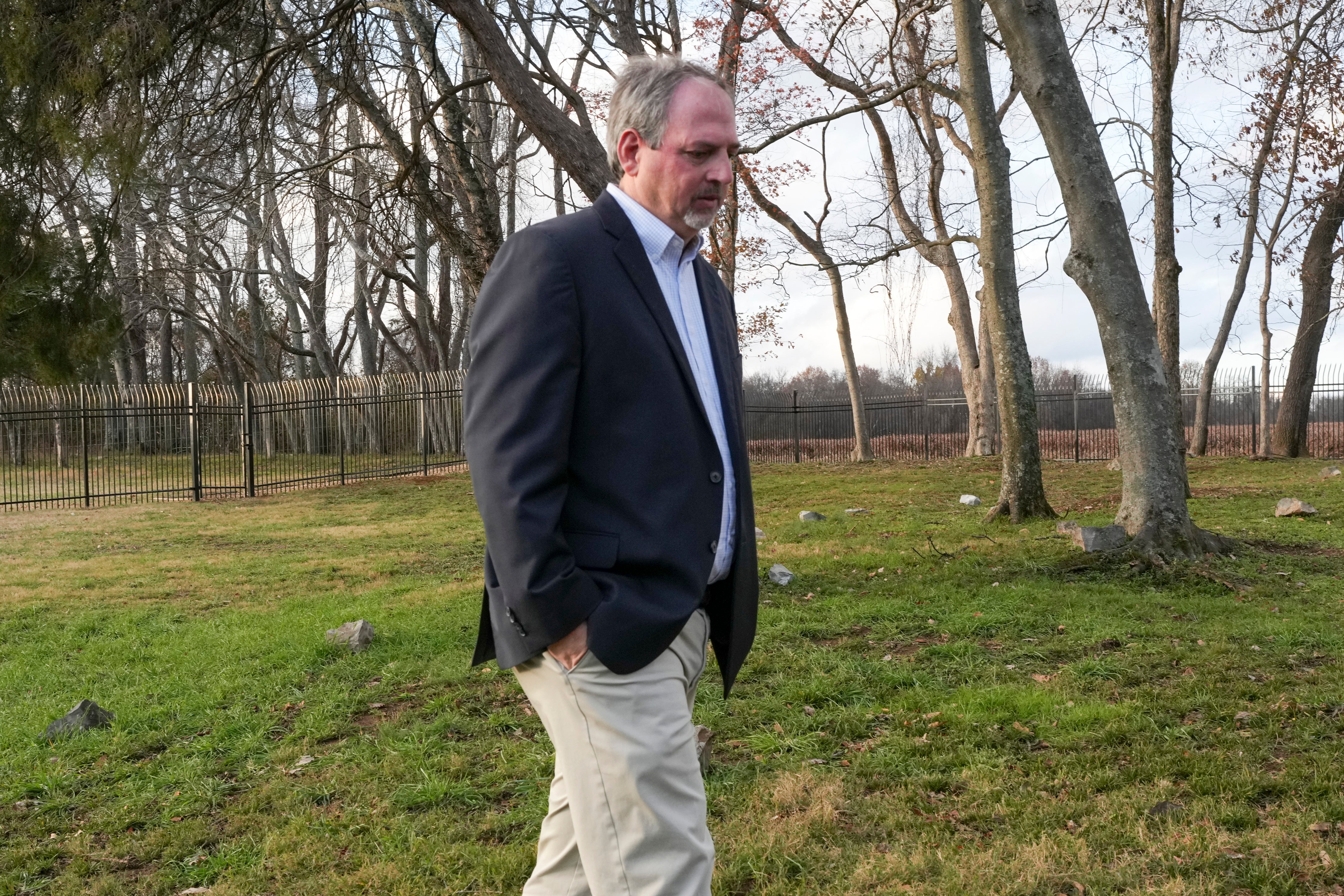The burial site of slaves owned by a former US president has finally been found
The gravestones had sunk below the surface

Your support helps us to tell the story
From reproductive rights to climate change to Big Tech, The Independent is on the ground when the story is developing. Whether it's investigating the financials of Elon Musk's pro-Trump PAC or producing our latest documentary, 'The A Word', which shines a light on the American women fighting for reproductive rights, we know how important it is to parse out the facts from the messaging.
At such a critical moment in US history, we need reporters on the ground. Your donation allows us to keep sending journalists to speak to both sides of the story.
The Independent is trusted by Americans across the entire political spectrum. And unlike many other quality news outlets, we choose not to lock Americans out of our reporting and analysis with paywalls. We believe quality journalism should be available to everyone, paid for by those who can afford it.
Your support makes all the difference.The location of the final resting place of a group of slaves once owned by a former president has finally been found.
At least 26 enslaved people died on the Tennessee plantation of President Andrew Jackson, the seventh US president, between 1804 and the end of the Civil War in 1865.
Nobody knew where they were buried. But on Wednesday, the Andrew Jackson Foundation announced a discovery: They believe they have found the slave cemetery at The Hermitage, the home of America's seventh president. That’s thanks to a radar confirming 28 bodies, including smaller graves of children or infants.
An old agricultural report from the 1930s had given them an idea: It mentioned an area that was not cultivated because it contained tall trees and graves. They also suspected the cemetery would be near the center of the 1000-acre (405-hectare) plantation, and on land of low agricultural value. Late last year, with the help of an anonymous donor who was interested in the project, they cleared trees and brought in archaeologist James Greene.
Physically walking the property to search for depressions and gravestones yielded a possible site. Ground-penetrating radar and a careful partial excavation that did not disturb any remains confirmed it: At least 28 people, likely more, were buried near a creek, about 1000 feet (305 meters) northwest of the mansion.

Finding the cemetery after all this time was exciting but also solemn for Tony Guzzi, chief of preservation and site operations.
“For me, this is going to be a reflective space. A contemplative space," he said.
Jackson was one of a dozen early U.S. presidents who owned slaves, and identifying their graves has been a priority at other presidential sites as well as historians seek to tell a more inclusive story about the people — enslaved and free — who built the young nation.
The Hermitage historic site already includes some of the cabins where enslaved people lived. The museum also has information gleaned from excavations and research on some of the people who were enslaved by the Jackson family.

The cemetery feels more personal.
“The existing cabins are a museum space, but it can be hard to get a sense of what slavery was like,” Guzzi said. “This is a tangible connection that makes it more real for people.”
The bodies are buried with their heads to the west in three north-south rows, but nearly all of their gravestones have sunk below the surface. Only two small wedges are visible, poking up through the ground at adjacent graves. All of the graves likely have stone markers at both the heads and feet, although they are not likely carved with names, Greene said.

And while ground-penetrating radar confirmed the presence of 28 bodies, there are likely more — including smaller graves of children or infants. A thick mat of tree roots made it difficult to confirm what's below, he said.
Starting next week, The Hermitage will begin including the cemetery in a free tour. It is surrounded by a high fence and visitors won't be allowed inside for now. Officials are still deciding on the next steps, starting with a more inclusive process.
“Going forward, our belief is that we need to have other voices help us consider what is appropriate in terms of memorialization or commemoration and anything like that,” said Jason Zajac, president and CEO of the Andrew Jackson Foundation. An advisory committee will include historians along with descendants of some of the enslaved people who lived at The Hermitage.

Jackson brought nine enslaved people with him when he bought the property where he would build The Hermitage, and he owned about 150 people at the time of his death, Guzzi said. They worked the fields, cared for the mansion and its residents and plied skilled trades like blacksmithing and carpentry.
“Besides the Jacksons, there was a large community of enslaved people here,” Guzzi said. “You can’t tell the story of the Hermitage without telling their story.”